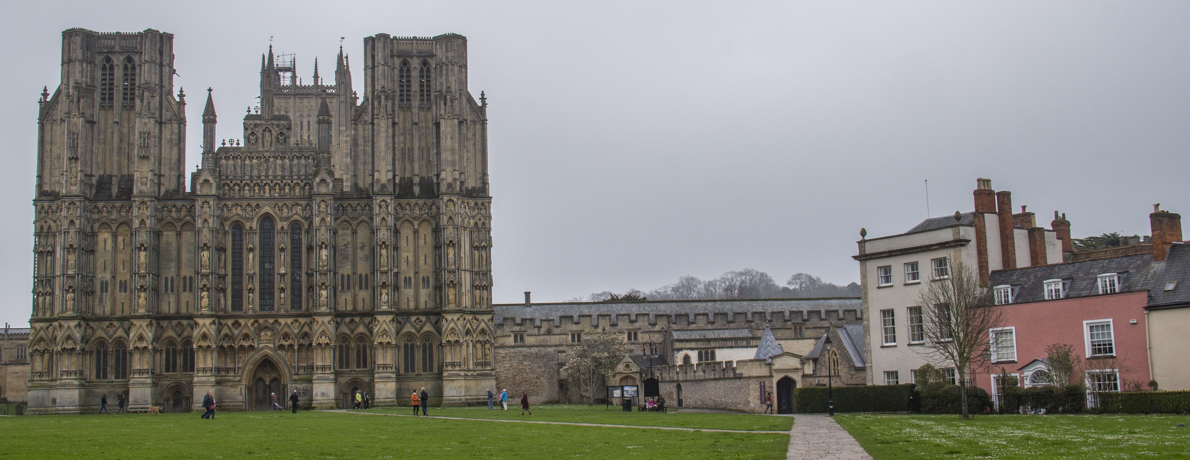
Wednesday is market day in the City of Wells in Somerset, England. When I arrived in Market Place it was overflowing with stalls as it has done every week on Wednesdays and Saturdays for past 800 years. This market is part of the heritage of Wells and on a Wednesday it includes a Farmers Market. Wells also has a Charter granted by King John in 1201 to hold five Charter Fairs every year. These used to last for several days and involved feasting and entertainment in the evenings and trading in the market during the day. Today only two Charter Fairs are held, one in May and one in November but recently they have been the subject of some controversy. On my way through the market I met Len Sweales, the city’s town crier. I listened to him announcing the market with a few merry quips about the various stalls.
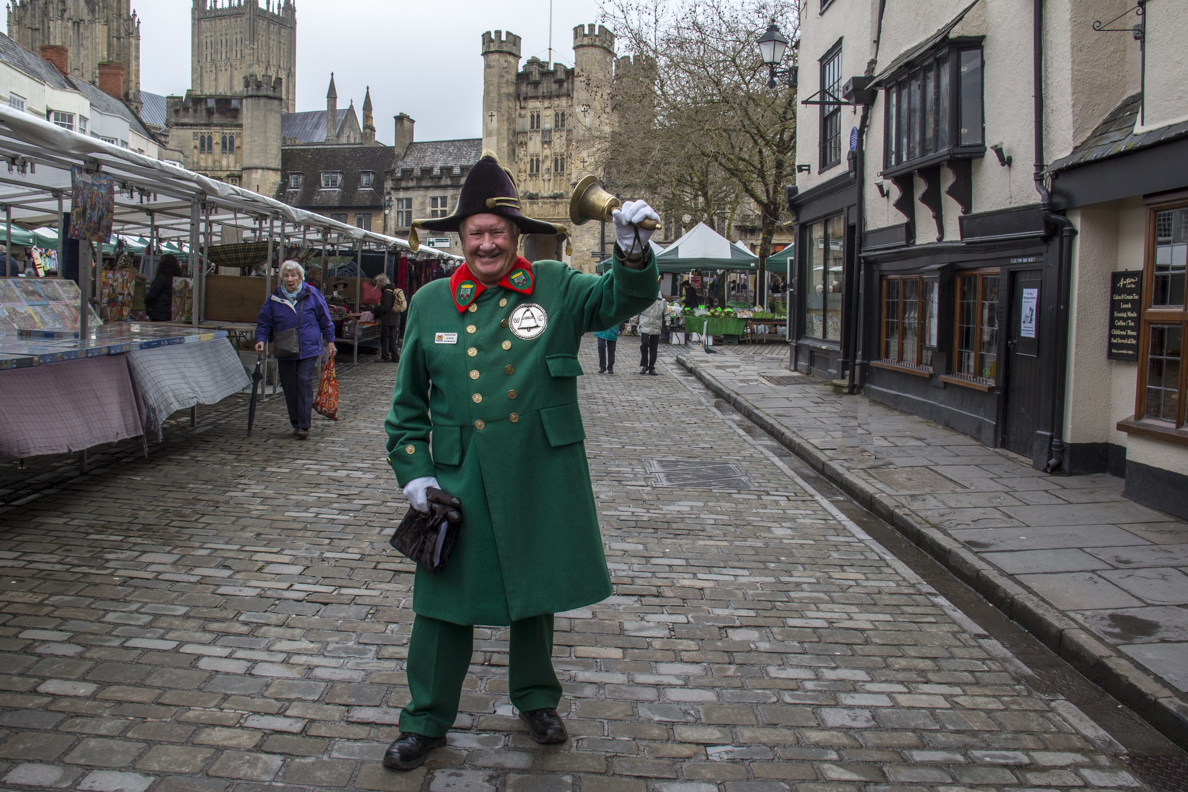
The Town Crier in Wells Market, Somerset
At the entrance to Market Place is the market cross with fountain. This fountain was built at the end of the eighteenth century to replace the conduit built by Bishop Beckynton that had recently been demolished. This was the first stop on the Heritage Walk I had joined that morning. Siobhan, our guide, brought back to life the days when the bishops ruled the town. Bishop Beckynton was a generous benefactor and the fountain in the market cross was both an example of his generosity and the importance of water to Wells. There has been a flow of water into the marketplace since the fifteenth century when it was provided by Bishop Beckynton. Prior to this most people drank cider. The gift of water from the Bishop to the people of the town was very symbolic. In return they had to promise to undertake an annual pilgrimage to his grave to pray for his soul. Whereas in the past people would have collected fresh drinking water from the fountain today is just an attraction. The high lead content in the water from the wells means it is not suitable for drinking the supply of domestic water comes from nearby Cheddar Gorge.
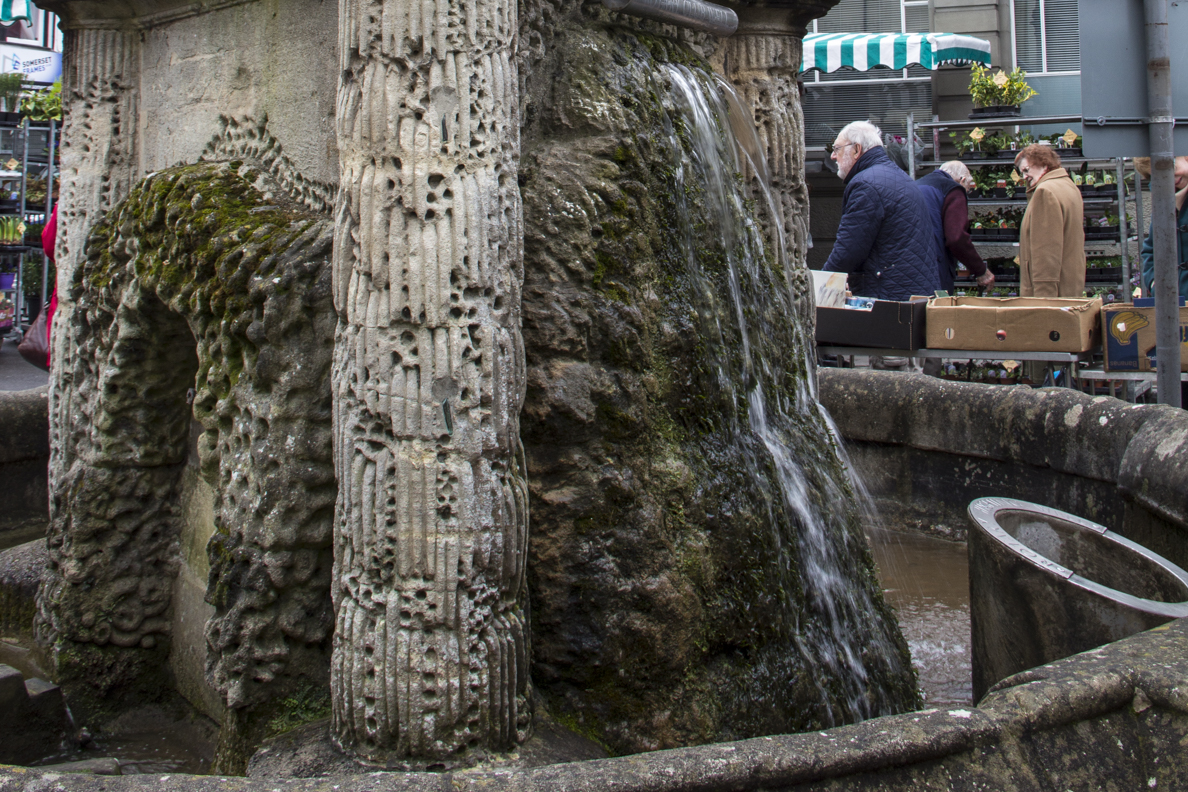
The Market Cross Fountain in Wells, Somerset
Water drains from the fountain down the conduits on either side of the High Street. Historically this water was used to clean the street but became a nuisance when the market was taking place. A new area, in front of the Town Hall, was added to house the expanding market towards the end of the eighteenth century. This created the dog-leg shape if Market Place and today it is the site of the Farmers Market. The Town Hall, built in 1779 represents the first occasion the townsfolk were able to do something without the permission of the bishop. In the past it housed the Assizes and a cheese market on its ground floor. This cheese market, on the ground floor, was the largest cheese market in the county. This cheese market, the largest cheese market in the county, became too big for its original site so the colonnaded area was added.
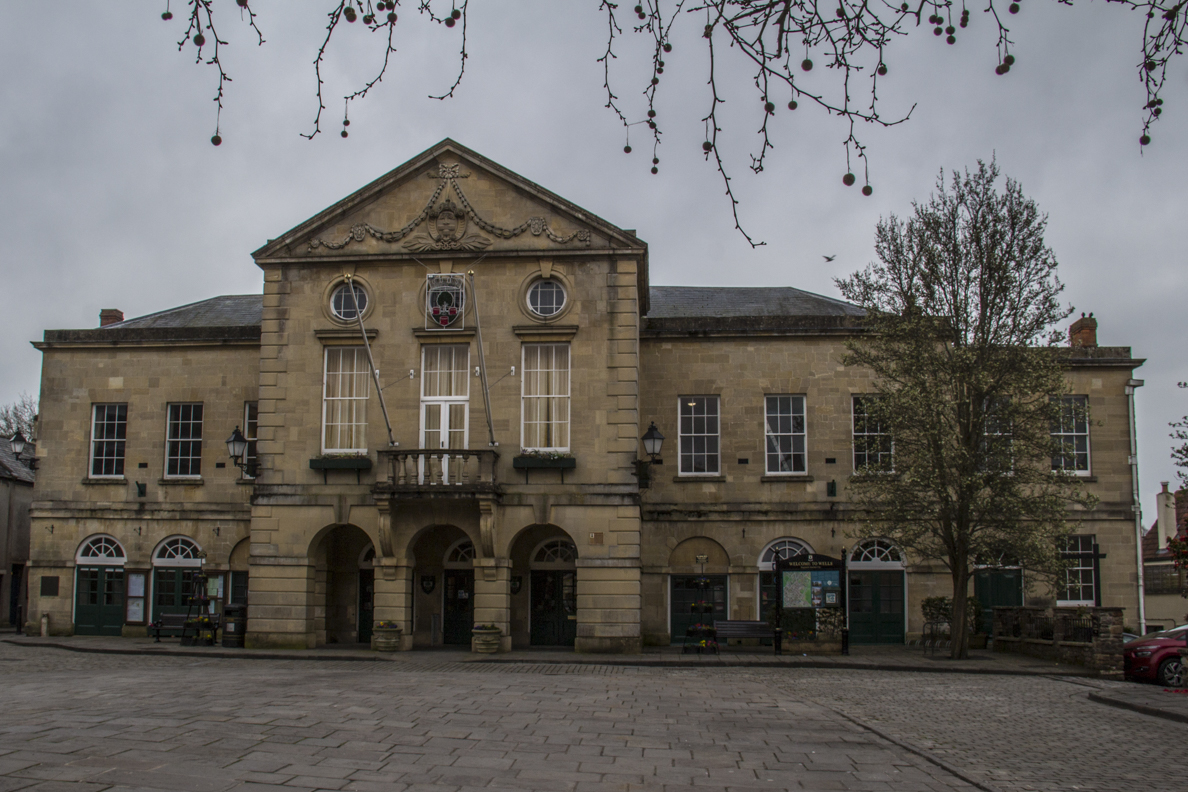
The Town Hall in Wells, Somerset
On the other side of Market Place is a row of buildings known as Bishop Beckynton’s Build as they were built by this bishop. He also supplied water to them. The water ran through the cellars and a tap at ground level brought this water into the building. In front of these buildings is a monument to one of the city’s most famous residents, the Olympic long jumper Mary Rand. This monument represents the World Record distance she jumped during the 1964 Olympics. Mary Rand was granted the Freedom of the City an honour that includes the right to herd sheep up the High Street and free transport home if found inebriated in the city. At the far end of Market Place is the Penniless Porch, a special place in the city as it marks the division between the city and its ecclesiastical area. This area, that comprises some five hundred acres is known as The Liberty due to an historical exemption from certain laws such as the liability to pay tax. Traditionally this gateway to the Cathedral Green was the place where the poor could beg for alms. On the far side of the gate is a large rebus, a picture symbol of a name, in this case Beckynton. This image represents a beacon or beck and a weight known as a tun – beck plus tun is Beckynton.
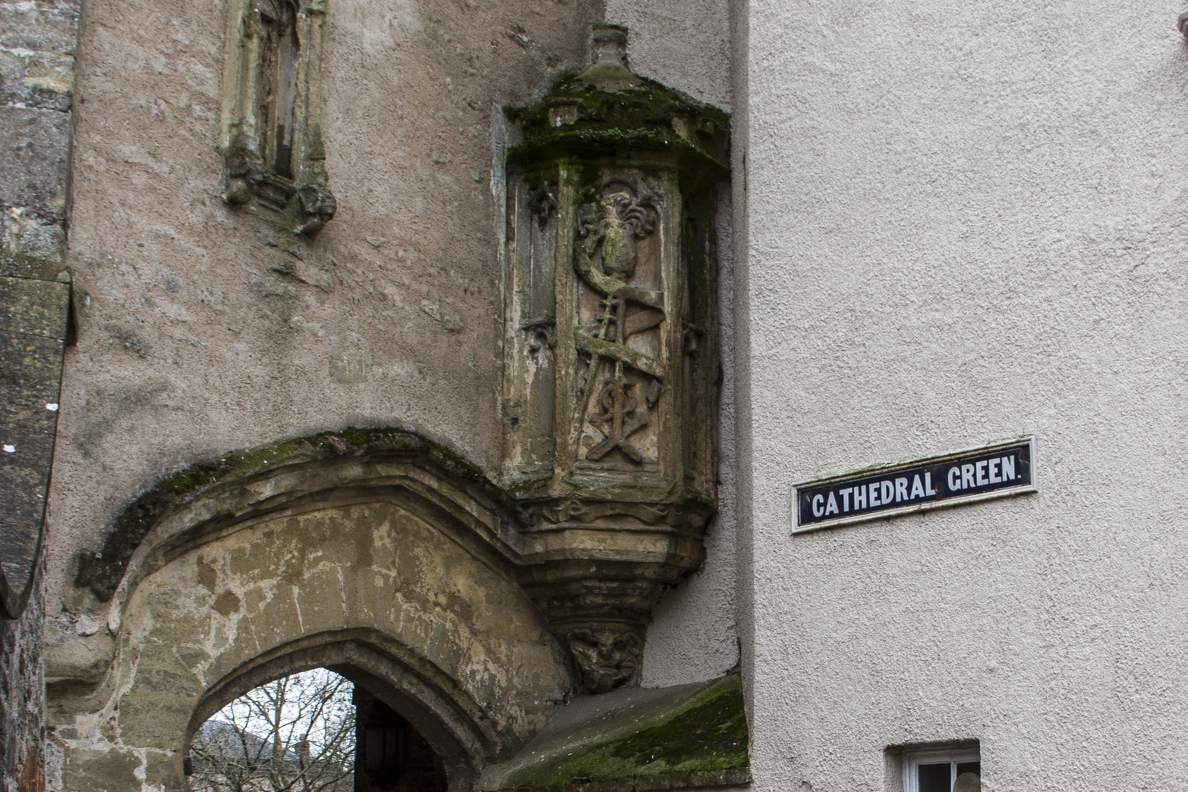
A Rebus on the Gateway at the Entrance to the Liberty in Wells, Somerset
The Cathedral Green is the original graveyard of the cathedral but nowadays it is used for recreation and festivals. From the green we had an excellent view of the west front of the cathedral, the last part of the building to be completed. Originally the west front was decorated with five hundred statues. The present building is not the original cathedral and when it was built during the twelfth and thirteenth centuries it was known as the new cathedral. It was built here as Wells was already seen as a sacred place due to its plentiful water. This new cathedral did not originally have cathedral status but Bishop Jocelin campaigned successfully for the seat of the Bishop to come back to Wells from Bath. The diocese became known as the diocese of Bath and Wells. When the cathedral was built the west front was painted and very colourful. It features trumpet holes at the top. The trumpets would be placed against these holes, they did not poke out, and beautiful music would be played. Because these holes were surrounded by statutes of angels it seemed that the music came from heaven. Lower down are the singing holes from which the choir could be heard singing. During the dissolution of the monasteries some damage was done to Wells Cathedral and statues were damaged or removed. Partial restoration has taken place of to illustrate the original appearance of this façade.
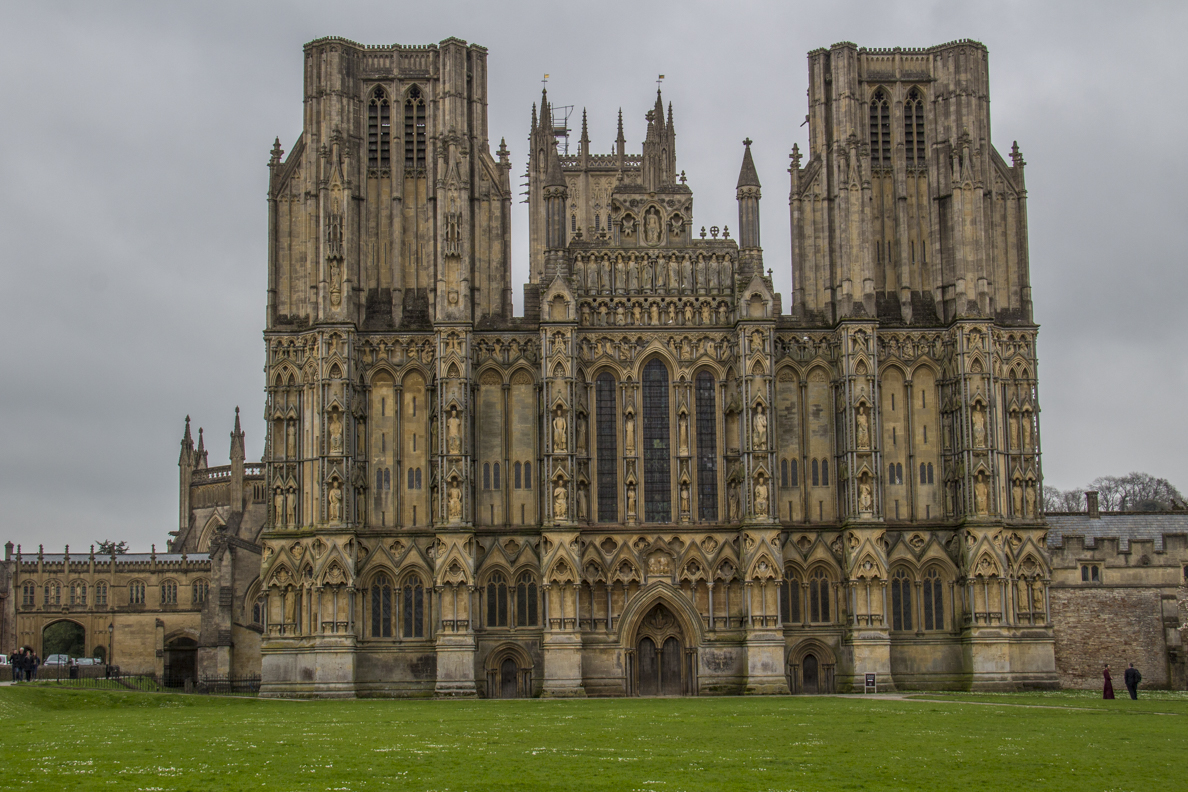
The West Front of the Cathedral in Wells, Somerset
On the far side of the Cathedral Green is the old deanery, once home to the Dean (the chief officer of the cathedral). Now the building houses the offices of the cathedral. On the wall at the side of the cathedral is a clock which uses the same mechanism as the clock inside the cathedral. The latter dates back to about 1330 and is reputedly the second oldest working clock in the world. The outside clock dates from 1475 and was placed on the wall opposite the communal hall of the Vicars Choral. The Vicars Choral are the men of the cathedral choir and when it was formed in the twelfth century they lived in lodgings in the town. This was found to be unsatisfactory and in 1348 Bishop Ralph of Shrewsbury founded a College of Vicars and provided them with a communal hall and their own houses grouped around a quadrangle. Bishop Ralph made it clear that each house was designed to accommodate one vicar – originally there were forty-two houses. The clock was installed opposite their dining room so they would always know the time and be punctual for their many duties in the cathedral. Above the clock face are two quarter jacks that sound the quarter. On the hour they sound the four quarters and the bell in the steeple then chimes the hour. There is also a quarter jack inside the cathedral above and the right of the clock. Known as Jack Blandifers, he hits a bell with the hammer in his right hand and chimes the two bells hung beneath him with his heels. At the same time a set of mechanical jousting knights chase each other every fifteen minutes.
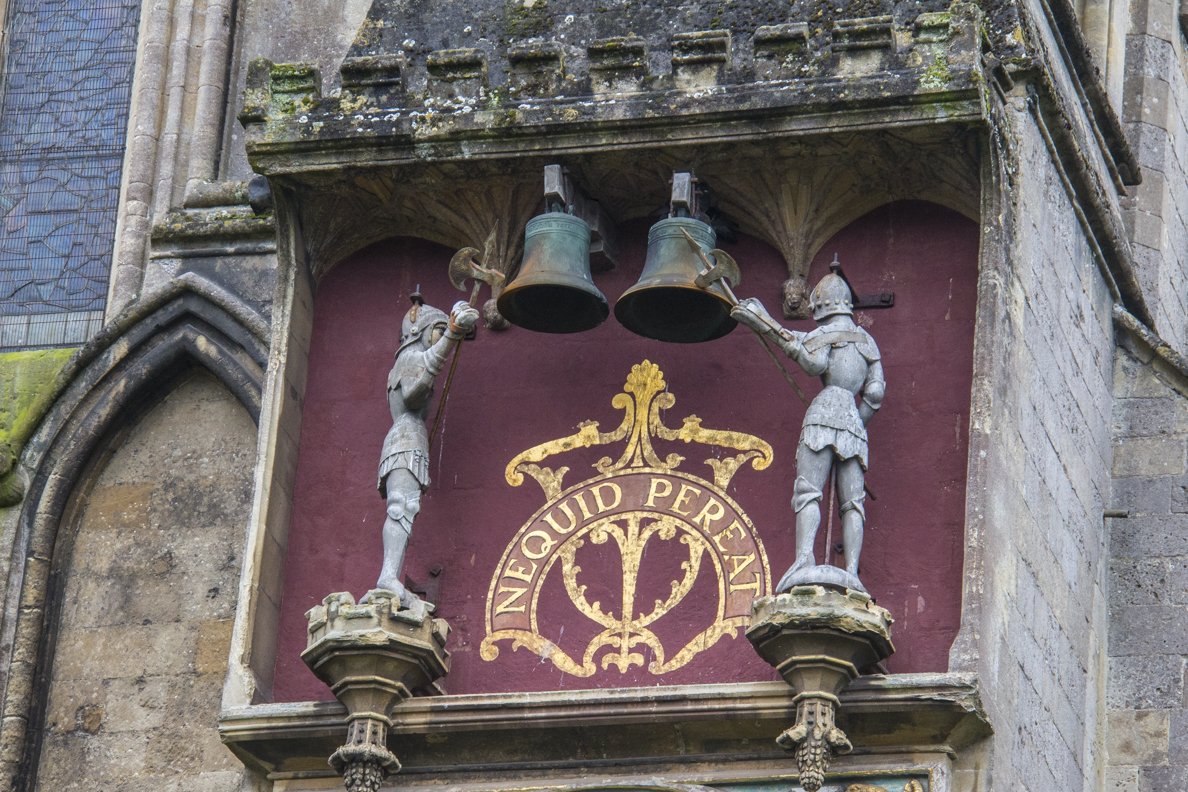
The Quarter Clock on the wall of the Cathedral in Wells, Somerset
A passage above the Chain Gate gives the Vicars Choral access into the cathedral without the risk of getting their feet wet in bad weather. On the far side of this gate an archway below their dining hall leads into the Vicars Close. This is the oldest continually inhabited street in Europe and still houses the men of the choir, the organists and other employees of the cathedral. About one hundred years after the close was built it was visited by Bishop Beckynton who discovered that the hall and houses were dilapidated. He insisted the Vicars must keep their houses in good repair. It was Beckynton who built the high level passage over St Andrew’s Street on the Chain Gate Bridge. He also extended the chimneys because the vicars were beginning to burn coal rather than wood and smoke was collecting in the close which was not very pleasant. Around the mid-fifteenth century the Vicars requested, and were given, gardens at the front of each house. Each garden was surrounded by a wall with an arched gateway. When the Church of England was established as the official church in England during the sixteenth century everything was scaled down. There was less pomp and ceremony and it was no longer possible to buy your way to heaven. However, the organists, men of the choir and other employees of the cathedral still live in this close. The medieval windows of the houses and the garden archways seem to have survived more or less intact until the early nineteenth century, and even now a few still exist, but for the most part, sash windows then replaced the old ones and the archways went at the same period. No. 22 is the house which remains closest to the original medieval appearance of them all, having been restored to its original proportions in 1863.

Vicars Close in Wells, Somerset
Our final stop on the tour was outside the Wells and Mendip Museum where there is a memorial to Harry Patch the last surviving British Tommy. Close to this monument is the hocus stone which has been moved here from its original position after being used as a gatepost. Once a price of been agreed then the parties to the agreement would shake hands through the hole. I went inside the museum which is fascinating, exhibiting a good variety of artefacts and information. It includes a room devoted to the Wookey Caves in the Mendips, information about the cathedral, some old embroidery, geology of the Mendips and a wonderful First World War exhibition. The latter was created entirely by volunteers. The museum relies on its volunteers as it only has one paid member of staff. The exhibits include a picture of the West Front of the cathedral showing its original colours.
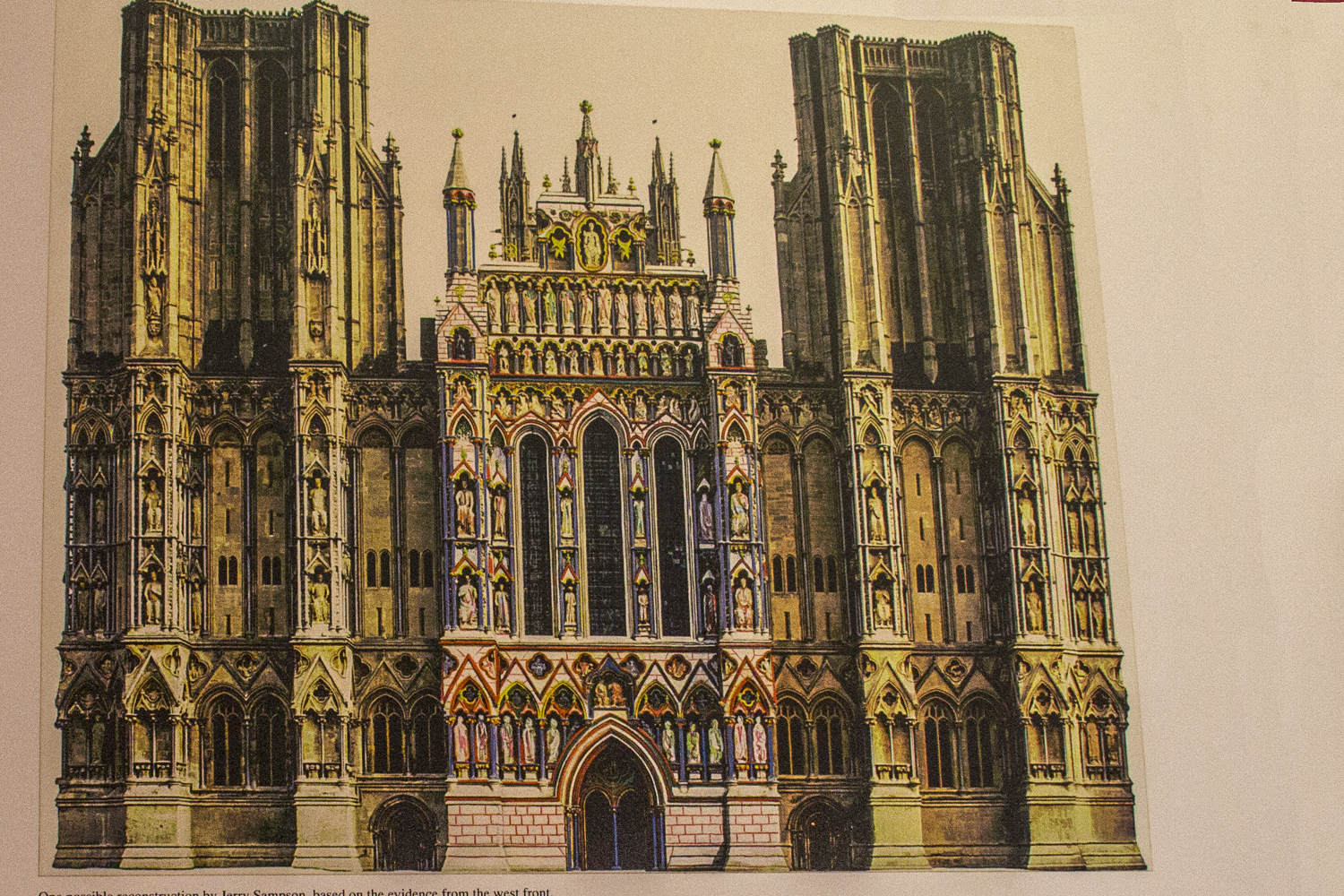
Picture of the Original West Front of the Cathedral in Wells, Somerset
I re-entered the city through Brown’s Gate close to the Swan Hotel. It is said that a previous owner so coveted the view of the cathedral behind the buildings in front of her hotel that she purchased the buildings and immediately knocked them down. I strolled along the High Street pausing to browse the hand-crafted items in the shop of the Somerset Guild of Craftsmen. I just had time to visit the Church of Saint Cuthbert before returning to the cathedral for a tour of its interior. This church is the biggest parish church in the county. It has a very impressive Jacobean ceiling and some attractive almshouses in its grounds.
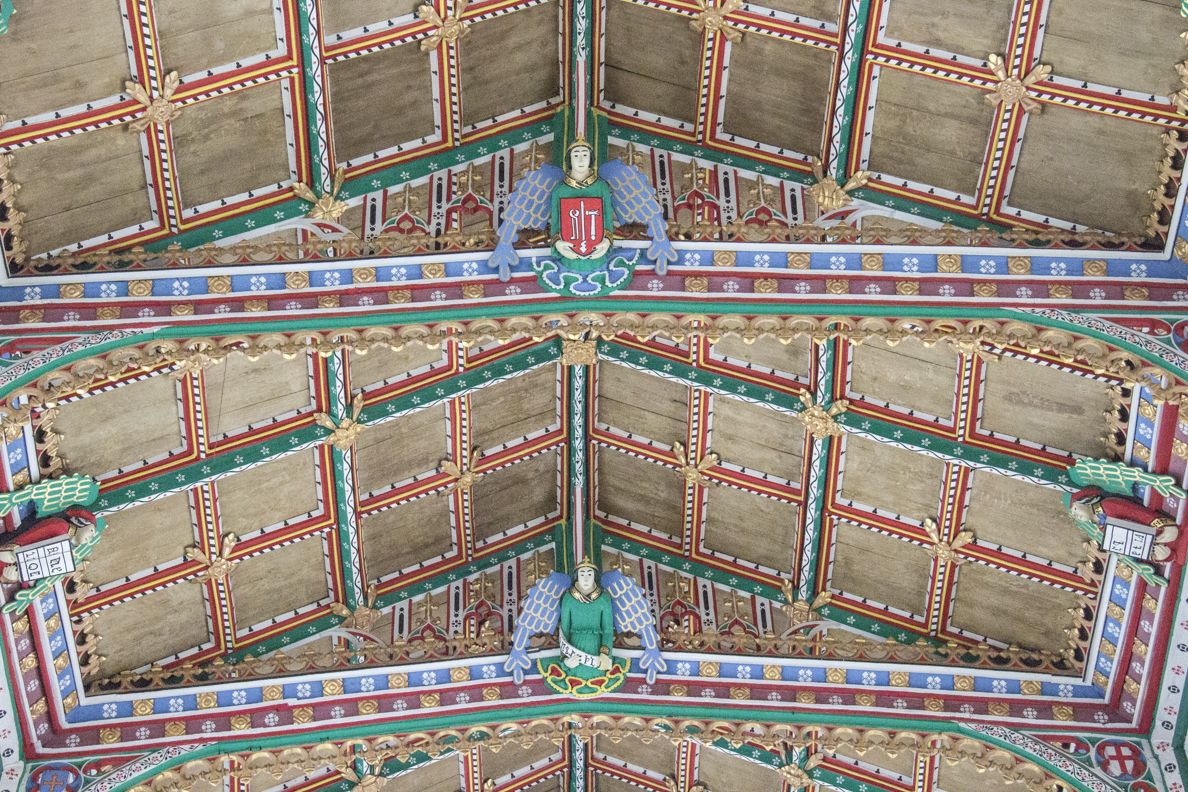
The Jacobean Ceiling in the Cathedra in Wells, Somerset
The cathedral is the first wholly Gothic Cathedral to be built in England. This style was not known at that time but was named retrospectively. Two of the main characteristics are the pointed arch, the use of flying buttresses. The latter are not generally visible as they are hidden in the triforium. These ideas came from France and were incorporated in the new cathedral of Wells in 1175. These ideas came from France and were incorporated in the new cathedral of Wells in 1175. Later additions include the most famous feature of this cathedral, its scissor arches. In 1313 cracks had begun to appear in the tower as its foundations were unstable. William Joy a master mason finally resolved the problem by constructing these arches arches between 1338 and 1348. The platform for the organ was also added later. Originally there was no seating either as the cathedral was a Catholic church and the services were processional.
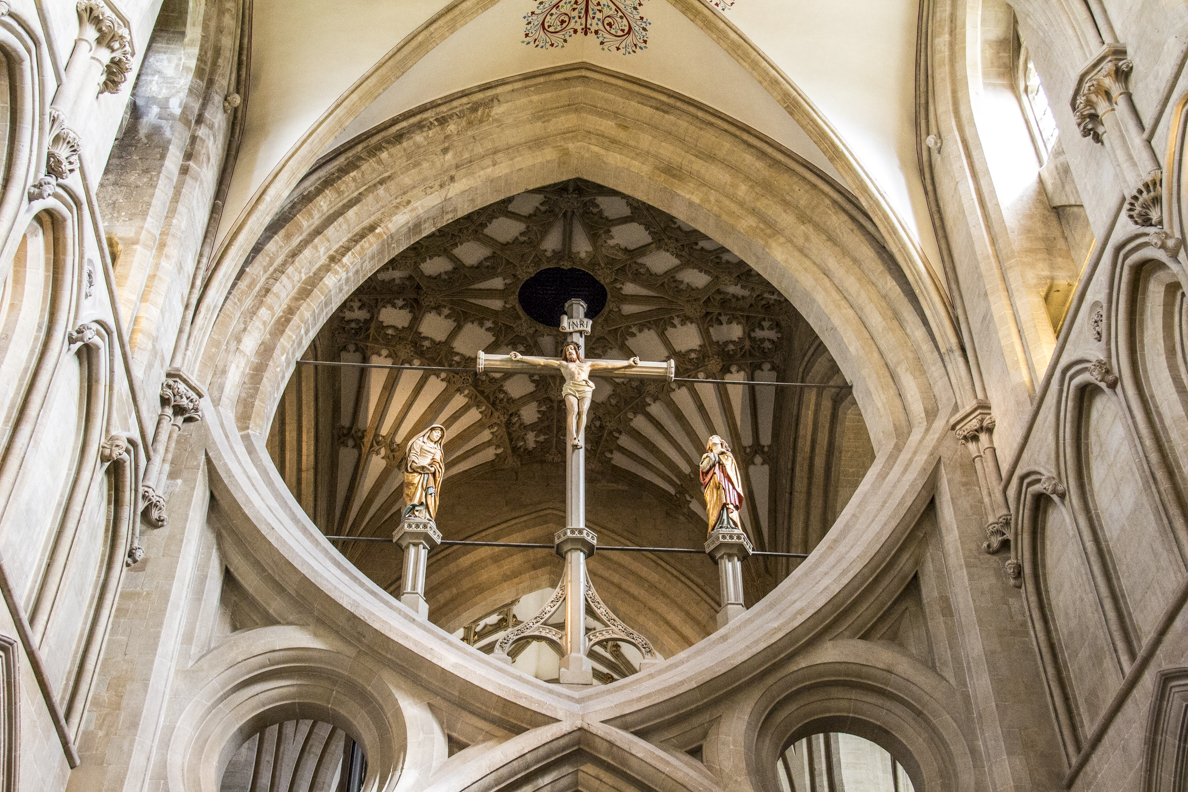
Scissor Arches in the Cathedral in Wells, Somerset
Leaving Wells, I walked along the path beside the moat that encircles the Bishop’s Palace. This took me past the Wells Recreation Ground and I noticed what looked like a church on the far side of the gardens. Curious I walked through the gardens to investigate. It is not a church but a Tithe Barn. This barn was built by the Bishop during the fifteenth century as the bishops extracted one tenth of the produce and crops produced by the local farmers and it was stored here. Currently discussions are being held concerning the restoration and future use of the barn. Lets hope this interesting reminder of the days the bishops ruled the town will be preserved and put to good use.

A Tithe Barn in Wells, Somerset
Where to Stay
While visiting Wells I stayed at The Cross in Croscombe where I was warmly welcomed by the owner, Terri Chichester. Conveniently placed for visiting Wells it was just far enough away to experience the tranquillity of a village and enjoy the Mendips landscape. I really enjoyed my stay at The Cross.
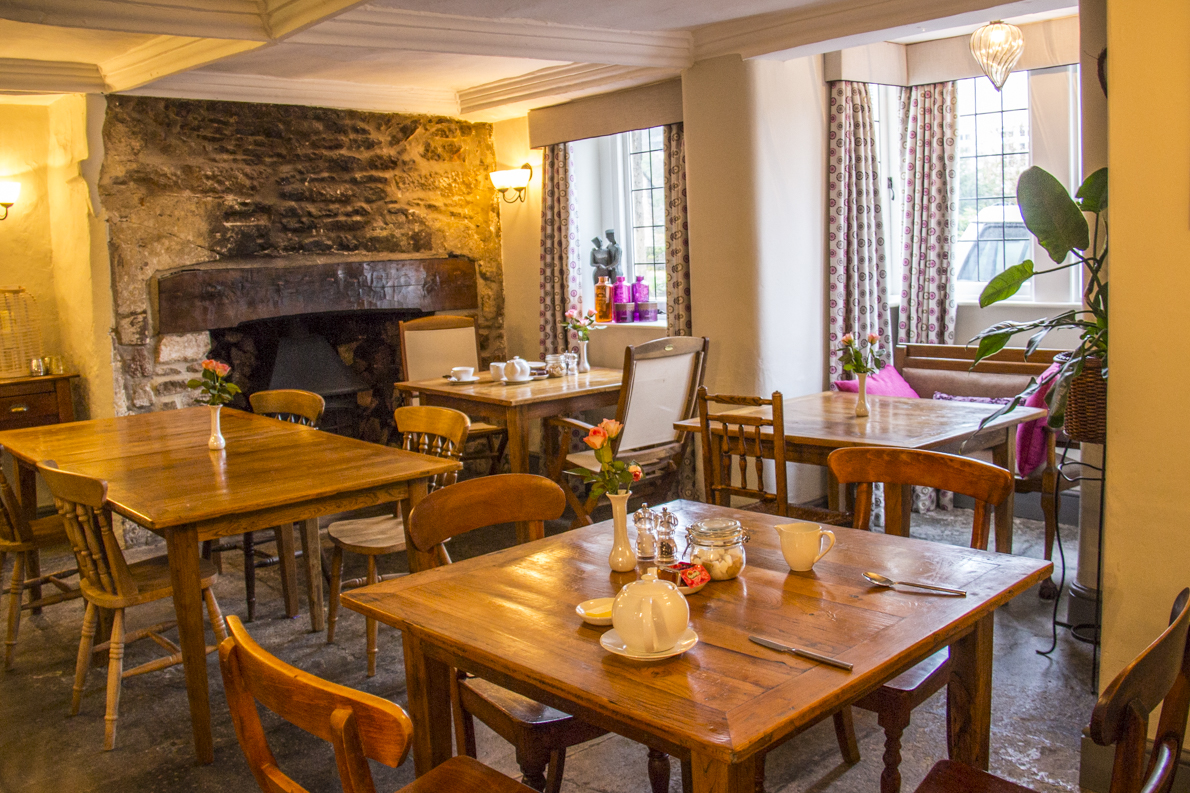
Now Available on GPSmyCity.com
This article is now featured on GPSmyCity. To download this article for offline reading or travel directions to the attractions highlighted in this article, go to Walking Tours in Wells on GPSmyCity